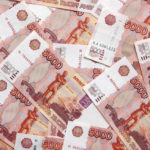The euro touched a two-month low against the US dollar, as the weak price pressure in the euro area, boosted speculation that ECB’s policy makers may have to cut interest rates at the upcoming meeting this Thursday.
EUR/USD touched the weakest level in two months at 1.3478 at 07:50 GMT, after which it advanced by 0.11% to trade at 1.3504 at 09:58 GMT. Support was likely to be received at November 22nd low, 1.3463, while resistance was to be encountered at January 31st high, 1.3568.
“There’s a good chance of additional monetary easing in the euro region if disinflation persists; I’d recommend selling euro-dollar on a rebound,” said Daisaku Ueno, the Tokyo-based chief currency strategist at Mitsubishi UFJ Morgan Stanley Securities Co., a unit of Japan’s biggest financial group by market value, cited by Bloomberg.
Eurostat reported on Friday that consumer prices in the euro area rose at an annualized pace of 0.7% in January, after a 0.8% increase in the previous month. Analysts had estimated that consumer prices will increase by 0.9% in January. This was a fourth straight reading of inflation under 1%, while the ECB tries to maintain inflation at just below 2%.
A separate report revealed that the inflation in the largest economy in the euro zone, Germany, unexpectedly remained steady at 1.2% in January, defying analysts projections of an increase to 1.3%. The low German inflation just added to evidence of weak price pressure in the 18-nation common currency area.
In November, the central bank unexpectedly cut its benchmark interest rate to a record-low 0.25%, after inflation in the euro area slowed its pace to 0.7%. The European Central Bank’s policy makers are scheduled to next meet on February 6th.
The weak inflation rate in the euro zone was mainly driven by a 1.2% slump in energy prices, today’s report showed. Core consumer prices, which exclude volatile items such as energy, tobacco and alcohol, however, increased by 0.8% this month, after a 0.7% advance in December.
A separate report showed the unemployment rate in the euro area remained unchanged at 12% in December, after November’s reading was downward revised to 12% from earlier estimates of 12.1%. The unemployment rate eased a bit from September’s high of 12.1%.
Meanwhile, greenbacks demand continued to be supported after Thomson Reuters in cooperation with the University of Michigan reported on Friday, the final reading of their gauge that tracks US consumer confidence, which came in at a of 81.2 in January, outstripping experts’expectations that pointed to a value of 81.0 and also the preliminary reading of 80.4, released on January 17th. The final value of the index of consumer sentiment stood at 82.5 in December.
Later today, a report may show that the US manufacturing PMI slowed down to a reading of 56.4 in January from 57.0 in December. The Institute for Supply Management (ISM) is expected to release the official figure at 15:00 GMT today. Better than projected readings will certainly provide support to the greenback.
Elsewhere, AUD/USD touched a session high at 0.8772 at 1:15 GMT, after which consolidation followed at 0.8760, gaining 0.09% for the day. Support was likely to be received at January 31st low and also the lowest level since July 20th 2010, 0.8694, while resistance was to be found at January 31st high, 0.8824.





